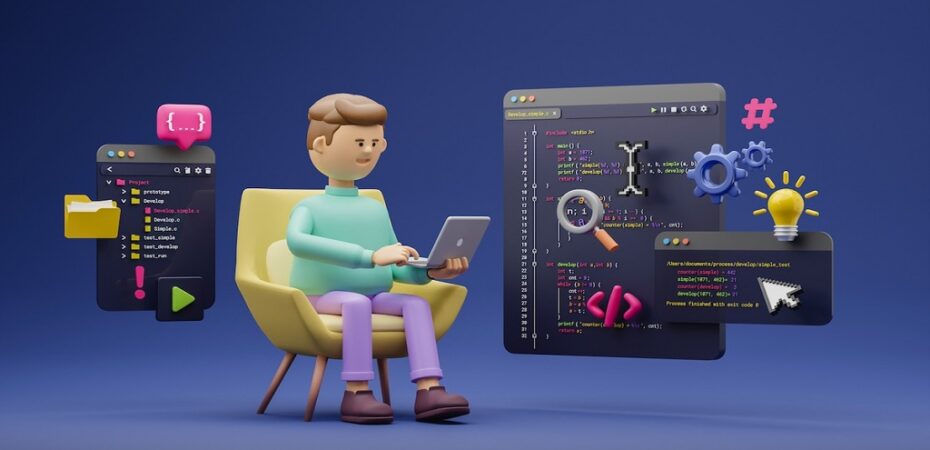If you’re aiming to design a dynamic UI, construct a sturdy backend infrastructure, or just seeking a solution demanding little tech prowess, a suitable instrument exists within the vast spectrum of web development languages for every aspiration. In this detailed journey, we’ll navigate the domains of front-end and back-end technologies, uncover their premier frameworks, and venture into the emerging universe of low-code and no-code solutions. Dive in to discover more!
1. Front-end development
In our visual-first world, aesthetics and interactivity play a pivotal role in capturing attention. Front-end is akin to designing a store’s window display; it’s what the world sees first and interacts with.
For over two decades, JavaScript stood as the linchpin of interactivity and it’s now functioning as a convoluted ecosystem with its chief frameworks.
React
Emerging from Facebook’s laboratories, React stands not merely as a library but as a transformative force in web application design. Initially developed to meet the internal needs of Facebook’s sprawling digital ecosystem, React’s prominence has soared, influencing the broader canvas of web development.
This tech champions the philosophy of reusable components. The component-centric outlook ensures apps remain scalable and easily maintainable by encouraging developers to build, tweak, and oversee individual segments autonomously.
React’s influence isn’t confined to web development. React Native, an offshoot, allows developers to transpose React’s principles to mobile application ecosystems. The tech finds its home in modern tech stacks like MERN.
Here are the perks of embracing this instrument:
- Optimizing updates to the real DOM ensures applications run smoother and more efficiently.
- Harmonizing JavaScript and HTML with JSX that empowers coders with a blended syntax.
- The robust community around React ensures a treasure trove of tools, extensions, and third-party libraries, broadening the horizons for programmers.
- React’s design DNA grants its effortless mesh with a slew of technologies, making it a versatile choice in diverse IT initiatives.
The challenges are:
- Initial hurdles for beginners: For those venturing fresh into React, JSX can pose initial challenges, as it offers a slightly different flavor compared to pure JavaScript.
- The flux of evolution: The rapidly shifting sands of the React ecosystem mean developers are on a perpetual learning curve, often necessitating updates and shifts in their codebases.
- Potential overengineering: For projects of a less grandiose scale, React’s capabilities might come off as overkill, making lighter tools or pure JavaScript a more prudent choice.
Vue.js
Springing from the innovative vision of Evan You, an alumnus of Google’s engineering ranks, Vue.js is not just another contender in the crowded web development ring. Conceived as a nimble alternative to the titans of its time, Vue.js has astoundingly bridged the chasm between simplicity and robust functionality.
Vue’s design philosophy, rooted in ease and adaptability, makes it an attractive sanctuary for those transitioning from vanilla JavaScript or other paradigms.
Without the backing of tech juggernauts, Vue’s ascendancy is a testimony to its efficacy. It has been fueled by grassroots enthusiasm, driven by its intuitive nature and meticulous documentation.
The tech’s embrace of single-file components — a fusion of template, script, and style — dramatically enhances readability and maintenance.
Let’s explore the chief merits of Vue.js:
- Echoing some peers: the framework champions bidirectional data linkage, rendering interactions between view and data seamlessly dynamic.
- A welcoming threshold: Among its arsenal, Vue’s unimposing architecture stands out. Paired with exhaustive guides, it’s a beacon for beginners in the web development odyssey.
- Virtual DOM virtuosity: Taking a leaf out of React’s book, Vue harnesses the potential of the virtual DOM, ushering in a realm of performance enhancements by minimally tinkering with the actual DOM.
- Reusable components capstone: Emphasizing DRY (Don’t Repeat Yourself) principles, Vue encourages crafting reusable components, reducing redundancy, and enhancing code elegance.
Nuances and considerations in the Vue paradigm encompass:
- Penetration paradigm: While Vue’s popularity is skyrocketing, it hasn’t achieved the ubiquity of some counterparts in enterprise-level engagements and job markets.
- The integration intricacy: For projects of monumental proportions, melding Vue with third-party libraries might necessitate extra legwork in terms of configurations and plugins.
- The ever-shifting ecosystem: Being part of a dynamic and evolving ecosystem means that Vue’s associated tools and practices are in constant flux, beckoning developers to remain on their toes.
Angular

Emerging from the innovation crucible of Google, Angular is not just another name in the vast sea of frameworks. It arose in the formative years of the 2010s as AngularJS and underwent a metamorphic renaissance with the debut of Angular 2. This pivotal shift was more than cosmetic—it reshaped Angular’s core, fostering a modular and expansive vision.
Angular’s affinity for TypeScript—a JS’s sibling—emphasizes robust type checks, fostering cleaner code and preempting many run-time errors.
The instrument’s foray into the realm of server-side rendering, courtesy of Angular Universal, is a nod to the ever-growing mobile user base, aiming for optimized experiences.
The framework is often the cornerstone in the celebrated MEAN assembly (MongoDB, Express.js, Angular, Node.js), a testament to its adaptability and crucial role in the modern digital fabric.
These are the underlying factors why the tool actually resonates with coders and is consistently listed among the best web development languages:
- Its inherent capability to effortlessly synchronize models and views via bidirectional data linkage diminishes repetitive code chores.
- Framework modularity: Its structure is steeped in compartmentalization, allowing programmers to craft, modify, and scale applications with distinct, reusable building blocks.
- Command line mastery: Angular’s CLI isn’t just a tool—it’s a developer’s ally, streamlining numerous tasks, from scaffolding to testing.
- A community-backed odyssey: With Google’s patronage and a global community of enthusiasts, Angular is constantly enriched with tools, updates, and best practices.
The Angular conundrum includes:
- The learning ascent: Angular’s multifaceted nature can pose challenges for novices, given its array of concepts from services to decorators.
- A rich tapestry, sometimes tangled: Certain developers opine that Angular’s approach can sometimes be exhaustive, especially when juxtaposed against more minimalist alternatives.
- The lightweight dilemma: For applications that are relatively featherweight, Angular might seem like wielding a sledgehammer to crack a nut. Simpler solutions could offer a more efficient pathway.
2. Back-end development
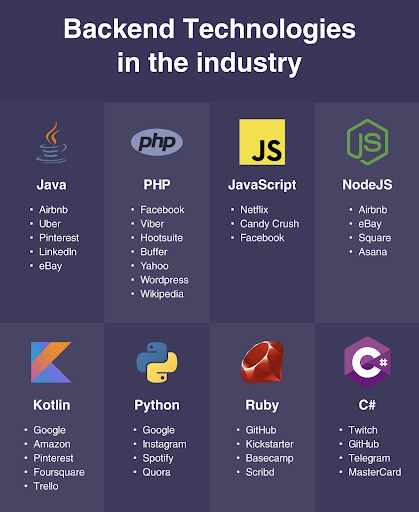
While the front-end paints the vibrant facade, the back-end constructs the unseen pillars that uphold a website or application. It’s akin to the foundation and structure of a skyscraper, hidden from view, yet crucial for stability and function. This area of coding ensures data processing, storage, and seamless connectivity. By selecting optimal web development languages, programmers can construct a durable and effective infrastructure. Let’s now consider some of them.
Python
Its expressive syntax, vast standard library, intuitive nature, and adaptability have championed diverse domains, e.g. scientific computing, desktop GUI apps, web scraping, data visualization, and more.
The tech’s top frameworks are:
- Django: Heralded as the “framework for perfectionists with deadlines,” Django offers a top-down, holistic approach to coding. Its in-built ORM, admin interface, and defense measures streamline the creation journey.
- Flask: In contrast to Django’s expansiveness, Flask is a compact toolkit that offers flexibility and freedom. With its lightweight nature, developers can craft backend solutions with precision, integrating only the essentials.
Java
From enterprise applications to dynamic websites, Java’s object-oriented nature and platform independence ensure its unwavering significance in back-end realms.
The top frameworks include:
- Spring Boot: Simplifying the Spring framework’s vastness, Spring Boot offers a rapid route to creating stand-alone, production-ready applications. Its auto-configuration and embedded server attributes enhance development productivity.
- Java EE: The Java Platform, Enterprise Edition, excels in building large-scale, distributed systems. With a robust set of APIs and extensive documentation, it stands as a beacon for enterprise-grade applications.
PHP
PHP, an acronym for “Hypertext Preprocessor,” was born as a simple scripting tool for dynamic web content. However, subsequently, it matured into a versatile server-side computing instrument. Its embedded nature within HTML, combined with a vast ecosystem, ensures that PHP remains a top choice for developers desiring rapid, yet robust, web solutions.
The dominant frameworks are:
- Laravel, renowned for its elegant syntax, prioritizes app maintainability and boasts options tailored for tasks from routing to verification and archiving.
- A set of reusable PHP components, Symfony shines in the arena of complex web projects. Its modular approach, coupled with extensive documentation, makes it a favorite for developers prioritizing scalability and performance.
3. Low-code development platforms
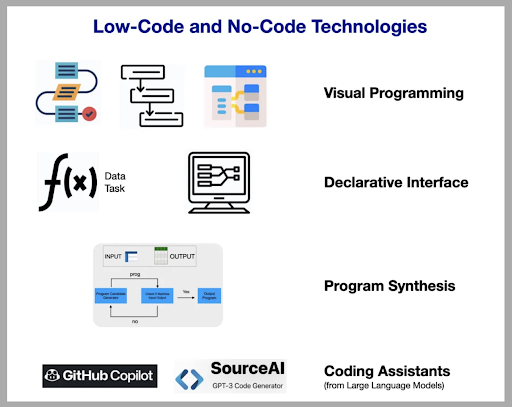
These emerge as the vanguard of this new era, enabling the work of web developers and services offered without delving deep into traditional coding paradigms. It’s like crafting a masterpiece with sophisticated building blocks, where customization meets convenience.
These platforms democratize engineering, allowing both seasoned developers and business professionals to bring visions to life. Let’s explore some of the standout platforms in this domain.
OutSystems
OutSystems, with its drag-and-drop functionality and visual environment similar to the one provided by the best web development languages, offers a streamlined approach to program creation. Whether it’s for web, mobile, or enterprise needs, its versatility is unmatched.
The product’s features and benefits include:
- Rapid deployment: With pre-built templates and widgets, OutSystems accelerates SDLC, enabling quicker time-to-market.
- Scalability: Its robust architecture ensures that as businesses grow, the applications can scale seamlessly, meeting evolving demands.
- Integration excellence: OutSystems boasts a rich set of APIs and integration points, ensuring smooth interoperability with existing systems and third-party services.
Mendix
Mendix, designed for both developers and business professionals, is more than a platform; it’s a bridge between ideas and their digital realization. It thrives on collaboration, ensuring that application development is a cohesive process.
The product’s features encompass:
- Collaborative design: Mendix incorporates a shared development environment, fostering teamwork between IT and business teams.
- Model-driven logic: This platform uses visual models to represent application logic, drastically reducing the coding effort and complexity.
- Extensibility: With a thriving marketplace of reusable components and integrations, Mendix ensures that every application can be tailored to unique business needs.
No-code development platforms
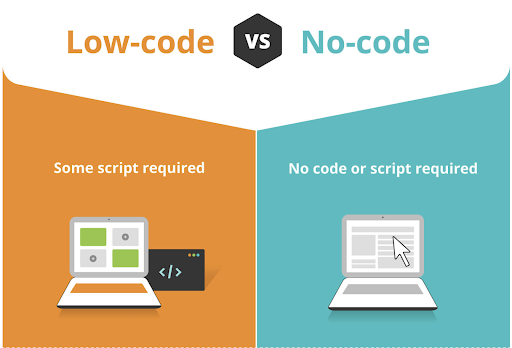
No-code platforms herald this movement, inviting individuals, regardless of their technical prowess and knowledge of web development languages, to craft digital solutions. Imagine molding your vision without touching a single line of code, where the boundaries of innovation are defined only by imagination. These platforms are the embodiment of this democratized approach to digital creation.
Webflow
Webflow, with its intuitive interface, empowers creators to craft responsive sites that are both visually captivating and functionally robust. It’s like wielding a digital brush where every stroke is a design element or function.
Webflow offers a visual canvas for CSS, allowing intricate design tweaks without manual code adjustments. With the instrument’s visual animation tools, creators can breathe life into static designs, enhancing user engagement. Moreover, Webflow’s content management system is both powerful and user-friendly, enabling dynamic content creation without the technical hurdles.
Bubble
Bubble’s philosophy is simple yet profound: if you can visualize it, you can build it. This platform has democratized application development, turning dreamers into makers.
With it, every function, from database operations to user authentication, becomes a draggable element, simplifying complex tasks. Visual database management removes traditional complexities, making data handling accessible to all. Lastly, a vast marketplace of plugins and integrations guarantees that Bubble can cater to miscellaneous niche requirements, broadening its application scope.
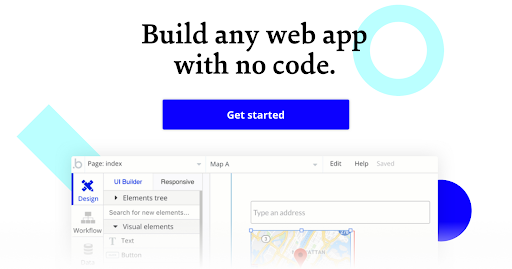
Conclusion
The domain of web development languages is continually evolving to cater to the diverse requirements of modern powerhouses and individual coders. As this guide has elucidated, a plethora of instruments exists, each tailored to delineated objectives – be it the meticulous construction of various architectures or the more streamlined methodologies.
The significance of these tools cannot be understated, and their choice directly impacts efficiency, scalability, and the overall quality of digital products. Whether one is an accomplished programmer delving into complex coding paradigms or an enterprise leader seeking rapid application deployment, there exists a tool specifically designed to meet those precise needs.
Read also:
- Best Call Tracking Software – Features That Drive Results
- Onboarding Made Easy: The Ultimate Software for Seamless Transitions
- Travel app development services and Its Cost
- How to Choose Quality Software for Board Portals?
- 9 Ways To Strengthen The Security Of Software Systems
- Scaling Python Applications in a Startup

